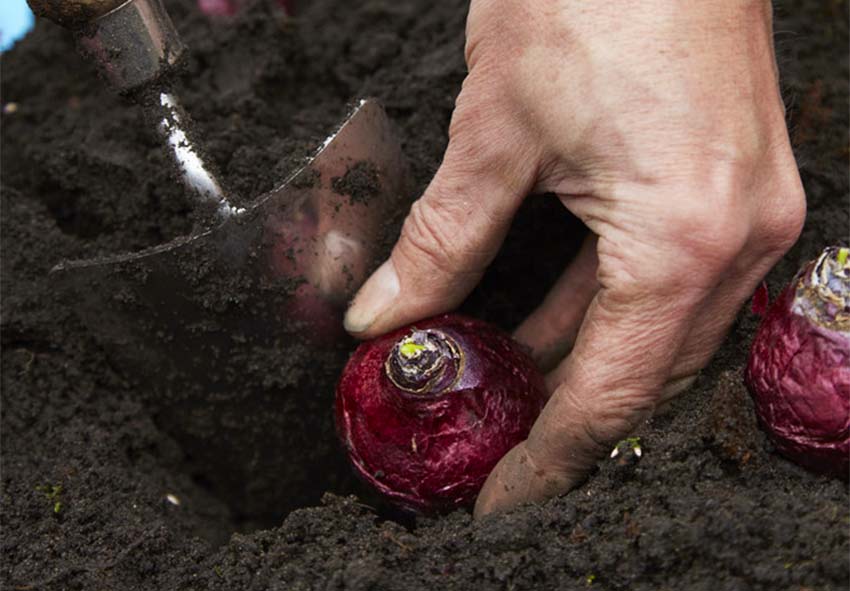Planting Hyacinth Bulbs: A Guide To Timing For Optimal Blooms

Table of Contents
Understanding Hyacinth Bulb Planting Seasons
Understanding the hyacinth's growing season is paramount to successful spring flowering. Hyacinths, unlike some other bulbs, require a period of cold stratification (chilling) before they'll bloom. This chilling period mimics the natural winter conditions they experience in their native habitats, triggering the physiological processes necessary for flower development. Without this crucial chilling period, your hyacinths may not bloom at all, or the blooms may be weak and sparse. Planting time, therefore, varies considerably depending on your climate zone. Generally, fall planting is recommended for spring blooms.
- Hyacinths require a period of cold stratification (chilling) before blooming. This chilling process usually occurs naturally during the winter months.
- Planting time varies depending on your climate zone. Colder climates require earlier planting to allow for sufficient chilling.
- Fall planting is generally recommended for spring blooms. This ensures the bulbs have enough time to establish themselves before winter arrives.
The length of the chilling period influences bloom time. Bulbs planted too late might not receive enough chilling, resulting in delayed or absent blooms. Conversely, planting too early can lead to premature sprouting and vulnerability to frost damage. The USDA hardiness zones provide a useful framework for determining your specific planting schedule.
| USDA Hardiness Zone | Suggested Planting Time |
|---|---|
| 6-8 | September - October |
| 5 | Late September - October |
| 4 | Early to Mid-September |
| 3 | Late August - Early September |
| Below 3 | Consult local gardening resources |
Preparing for Planting Hyacinth Bulbs
Before you even think about planting, choosing healthy bulbs and preparing the soil is vital for successful hyacinth cultivation. Healthy bulbs will produce vibrant flowers, while well-drained soil prevents rot and encourages strong root development.
- Select firm, plump bulbs without damage or soft spots. Discard any bulbs that show signs of mold, decay, or mechanical damage.
- Choose a well-drained location with plenty of sunlight. Hyacinths need at least 6 hours of sunlight per day.
- Amend heavy clay soils with compost to improve drainage. Adding compost enhances soil structure, aeration, and nutrient content.
Inspecting your bulbs carefully is the first step. Feel for firmness; a soft or mushy bulb is likely diseased and should be discarded. The planting location is crucial; poorly drained soil leads to bulb rot. Amend heavy clay soils with organic matter like compost to create better drainage. This is especially important for areas with high rainfall during winter.
The Optimal Timing for Planting Hyacinth Bulbs: A Regional Guide
The optimal timing for planting hyacinth bulbs depends heavily on your geographic location and its corresponding climate. Generally, across most temperate zones, fall planting (September-November) is ideal.
- Fall planting (September-November) in most temperate zones. This allows the bulbs time to establish root systems before winter.
- Specific planting dates for various regions (e.g., Northeast, South, West). Consult local gardening resources or agricultural extension offices for precise planting dates.
- Consider local frost dates as a guideline. Plant your hyacinth bulbs several weeks before the first expected frost.
To determine the best planting time for your specific area, consult a planting zone map for your region. Many online resources provide detailed planting guides based on USDA hardiness zones and specific locations within those zones. Remember, the goal is to plant before the ground freezes but after the hottest summer temperatures have passed.
Planting Techniques for Maximum Blooms
Proper planting technique significantly impacts the abundance and quality of your hyacinth blooms. Follow these guidelines to ensure maximum results:
- Plant bulbs pointed-end up, at a depth of 5-7cm (2-3 inches). The pointed end is the growing tip.
- Space bulbs 10-15cm (4-6 inches) apart. This allows for adequate space for root and foliage development.
- Water gently after planting. Avoid overwatering, which can lead to rot.
Planting depth and spacing are key. Planting too shallow exposes the bulbs to freezing temperatures or drying winds, while planting too deep can inhibit growth. Proper spacing prevents overcrowding, promoting healthy growth and maximizing flowering. After planting, a gentle watering helps settle the bulbs and initiate root development.
Conclusion
Planting hyacinth bulbs at the right time is key to enjoying their magnificent spring blooms. By following this guide and considering your specific region's climate and frost dates, you can ensure your hyacinths thrive and provide a stunning display of color. Remember to choose healthy bulbs, prepare your soil, and plant at the optimal time for your location to achieve maximum bloom. Start planning your hyacinth bulb planting today and get ready to enjoy the beauty they bring to your garden next spring!

Featured Posts
-
 Update Cuaca Semarang Hujan Diprediksi Pukul 1 Siang 26 Maret 2024 Jawa Tengah
May 29, 2025
Update Cuaca Semarang Hujan Diprediksi Pukul 1 Siang 26 Maret 2024 Jawa Tengah
May 29, 2025 -
 Alensryt Almqnet Fy Almjtme Thlyl Memq Lzahrt Tah
May 29, 2025
Alensryt Almqnet Fy Almjtme Thlyl Memq Lzahrt Tah
May 29, 2025 -
 Arcane The Ultimate Guide To Jinxs Survival
May 29, 2025
Arcane The Ultimate Guide To Jinxs Survival
May 29, 2025 -
 Nike Dunks On Sale 52 Off At Revolve Shop Now
May 29, 2025
Nike Dunks On Sale 52 Off At Revolve Shop Now
May 29, 2025 -
 The Pitt A New Stars Hollywood Lineage
May 29, 2025
The Pitt A New Stars Hollywood Lineage
May 29, 2025
